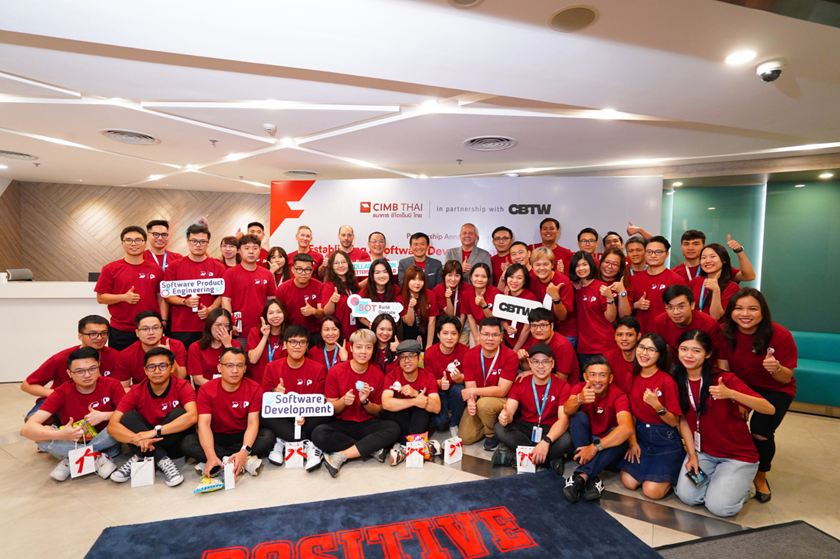“Culture eats strategy for breakfast.” – Peter Drucker
In the race to scale software delivery, many organizations focus on expanding capacity and accessing talent. Yet what often determines long-term success isn’t just strategy – it’s culture.
This is especially true when building offshore development teams. Strategy may define the playbook, but culture determines how consistently and effectively that playbook is executed. Companies that overlook this reality often find their offshore teams struggling with misalignment, disengagement, and attrition.
At CBTW, we believe engineering excellence must be embedded in how teams work -not just what they deliver. Our Build-Operate-Transfer (BOT) model provides a structured approach that enables companies to scale engineering capacity while institutionalizing the culture that powers high performance.
Why Culture is The Real Engine of Nearshore/Offshore Success
Building software is a technical endeavor. Building a high-performing engineering team is not.
Culture shapes how teams solve problems, respond to feedback, manage complexity, and collaborate across borders. It influences everything from sprint planning to stakeholder management. In distributed environments, culture isn’t a “nice to have” – it’s a strategic enabler.
Without intentional cultural integration, remote teams risk drifting from a company’s values, resulting in slower delivery, inconsistent quality, and weaker ownership. These aren’t just operational issues – they’re cultural fractures that compound over time.
The BOT Model: A Platform for Culture-Driven Software Delivery
CBTW’s Build-Operate-Transfer model is designed not only to scale delivery but to foster a seamless cultural integration between onshore and remote teams. The model unfolds across three phases:
1. Build – Recruiting for Skill and Fit
From day one, CBTW focuses on assembling teams that match both the technical requirements and the client’s cultural DNA. This includes communication preferences, collaboration styles, and adaptability to existing work rhythms.
This phase also involves structured onboarding programs and cultural workshops designed to immerse new team members in the client’s values and operational methodologies. By mirroring the client’s onboarding practices, development tools, and workflows, new team members don’t just learn how to deliver – they internalize how the client defines excellence.
The result: early alignment that accelerates cohesion and minimizes the cultural ramp-up time.
2. Operate – Embedding Culture into Daily Routines
As delivery begins, CBTW manages the offshore team while preserving and reinforcing the client’s operating model. Agile ceremonies, planning cadences, and performance feedback loops mirror the client’s practices.
We invest in ongoing initiatives such as in-house English training, Agile and DevOps coaching, and bi-directional knowledge-sharing across locations. These mechanisms build communication fluency and mutual trust. Additionally, mentorship programs and regular team-building activities foster team cohesion and engagement.
Through recognition programs and structured retrospectives, values are not just communicated – they are reinforced through action. This ensures that the remote team truly functions as an extension of the client’s engineering organization.
The result: a team that feels like an extension of the client’s own engineering organization, not an external vendor.
3. Transfer – Handover Without Disruption
In the final stage, clients assume full ownership of the team, infrastructure, and operations. But unlike traditional transitions, there’s no disruption – because the team is already working with the client’s tools, processes, and standards.
The result: a high-performing, aligned team ready to scale under the client’s direct leadership.
Case in Point: CIMB Thai Bank
CIMB Thai Bank partnered with CBTW to build a dedicated engineering hub in Hanoi. The goal: accelerate digital banking transformation while maintaining full control over delivery quality.

Under the BOT model, the team was recruited, trained, and embedded in CIMB’s Agile and DevOps ecosystem. Engineers worked on mobile app enhancements and backend services, with full integration into CIMB’s delivery cycles.
Through targeted onboarding, collaborative workshops, and English training, the offshore team was rapidly aligned with internal expectations. The result was not just a functional team, but a digital capability center supporting zero-downtime deployments and continuous innovation.
The Bottom Line: Strategy Needs Culture to Succeed
Many companies invest heavily in strategy. Fewer invest intentionally in culture. But in distributed software development, one without the other is a recipe for failure and underperformance.
The BOT model isn’t just a way to build capacity – it’s a way to institutionalize culture at scale. It creates the conditions for engineering teams to deliver with ownership, resilience, and strategic alignment from day one.
And importantly, culture does not remain a one-way transfer from client to team. Over time, it evolves into a shared ethos – still grounded in the client’s principles, but enriched by the diverse perspectives and working styles of the team itself. This hybrid culture is often more resilient, more creative, and ultimately better positioned to thrive in complex, global environments.
At CBTW, we don’t just build teams. We help our clients build engineering cultures that last.